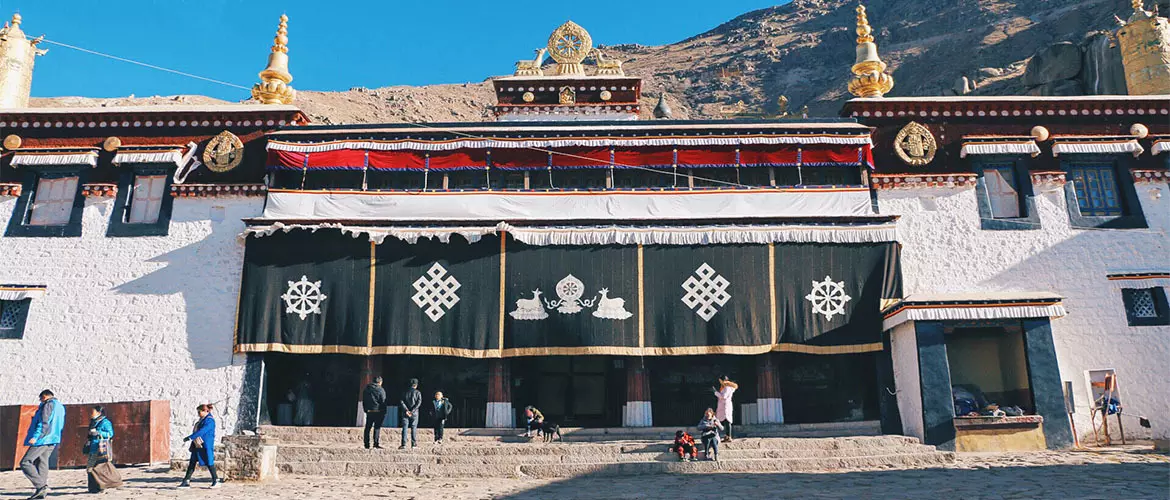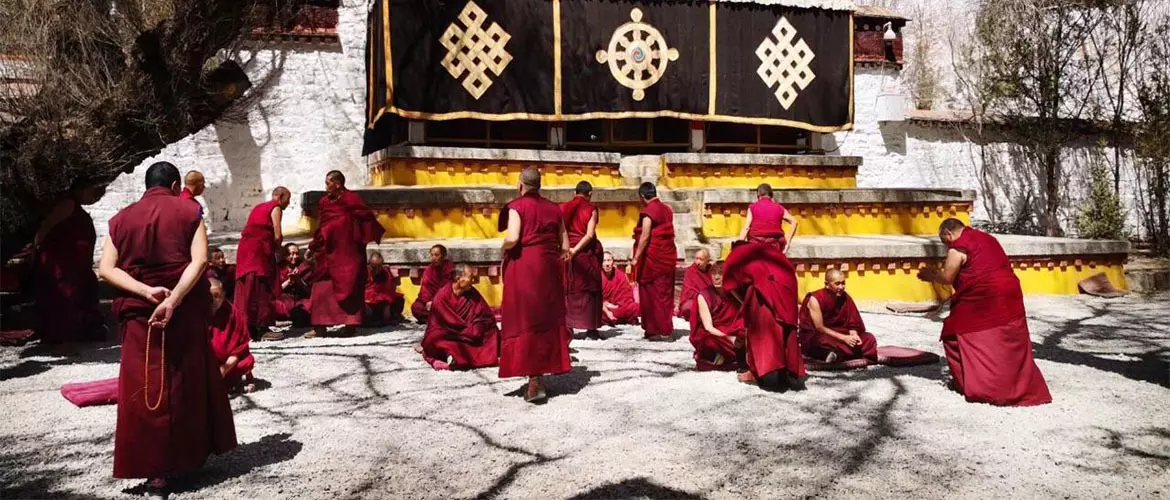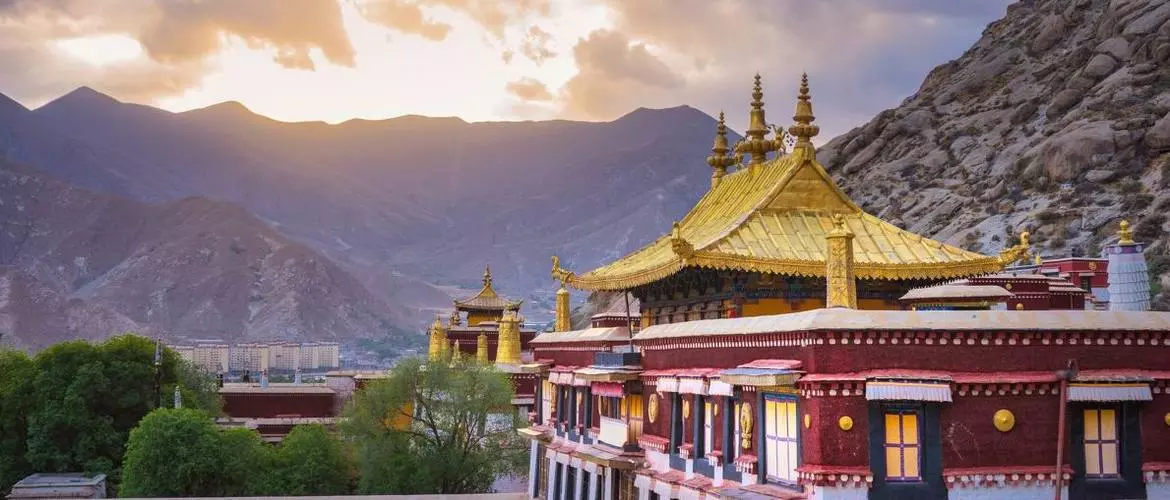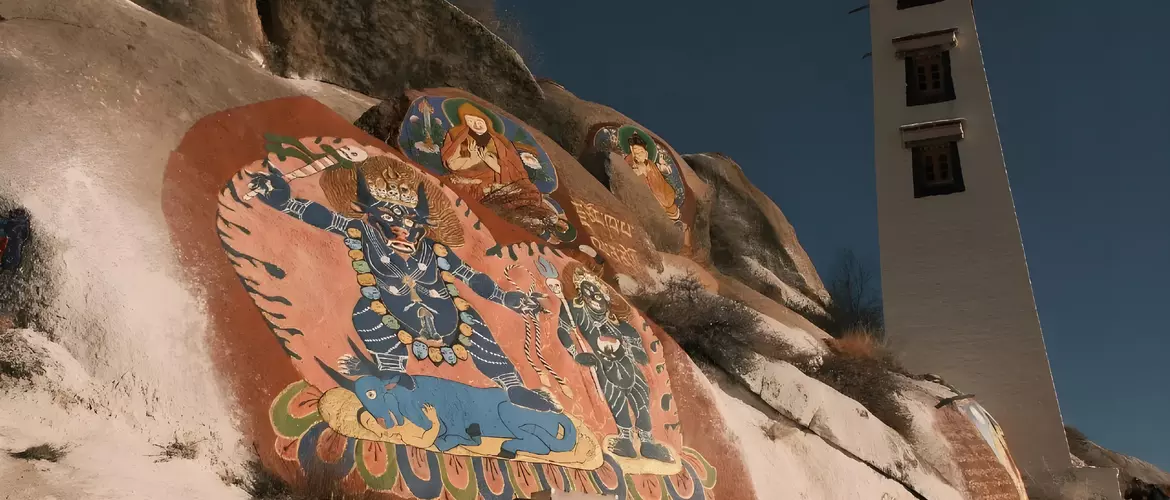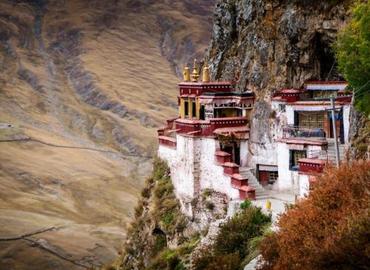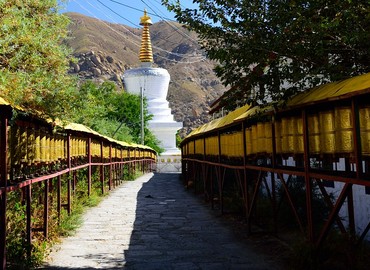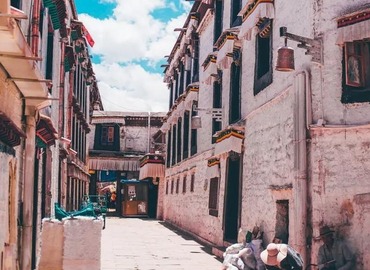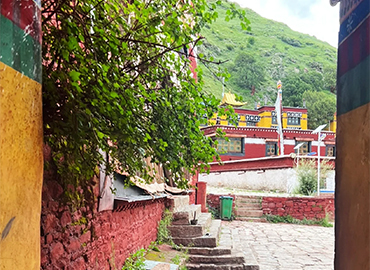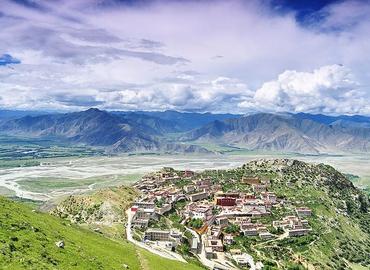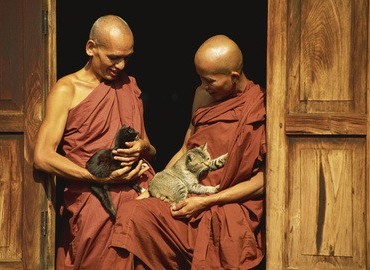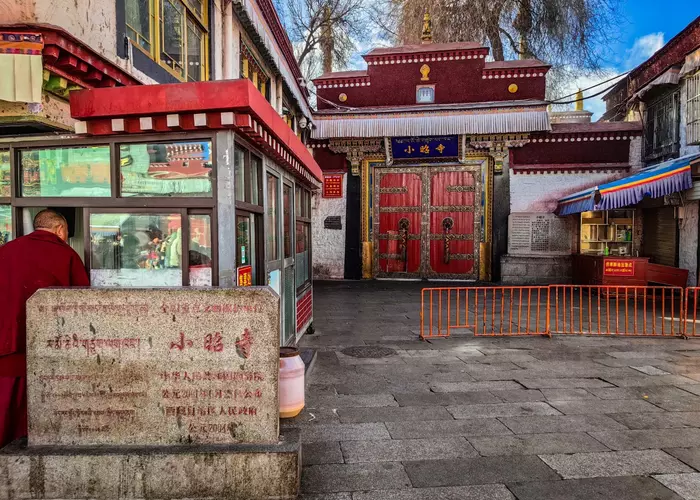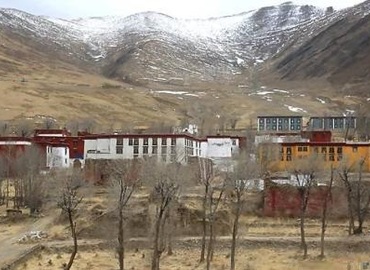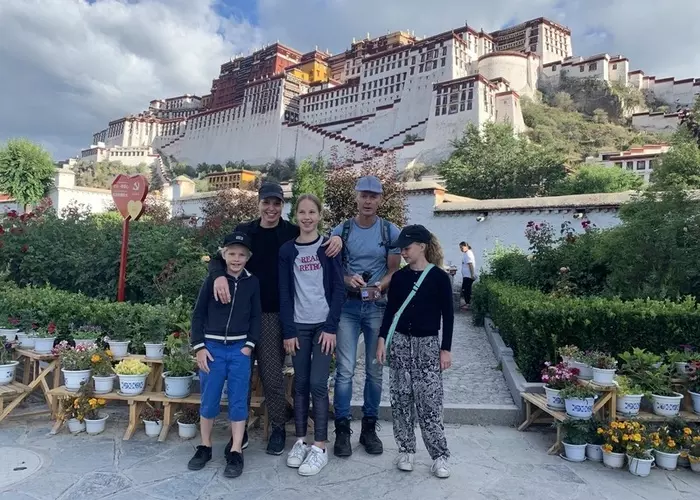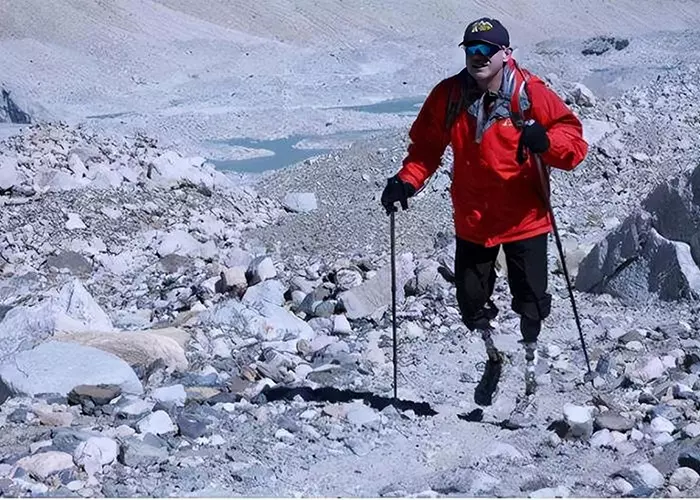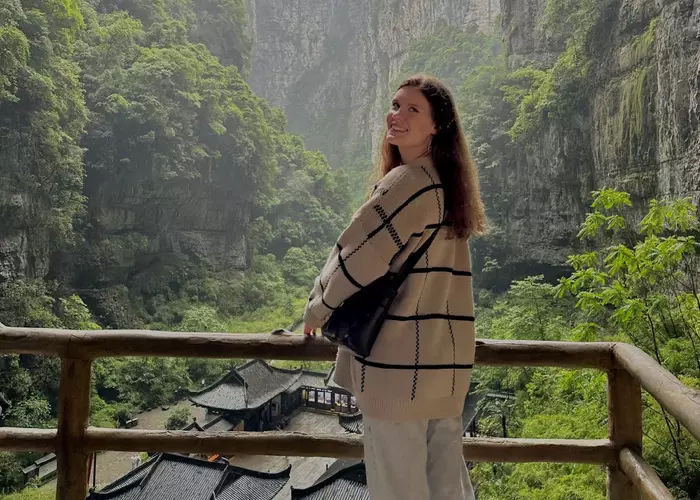Sera Monastery is one of the "great three" Gelug University monasteries of Tibet. The other two are Ganden Monastery and Drepung Monastery. It sits at the foot of Utsé Mountain, which is on the northern outskirts of Lhasa, only about 10 kilometers away from Lhasa downtown. The origin of its name is attributed to the fact that the site where the monastery was built was surrounded by wild roses in bloom. In the Tibetan language, wild roses can be read as "Sera". So it's named Sera Monastery. In its heyday, it housed more than 8,000 monks, second only to Drepung Monastery. It is the second-largest monastery in the Tibetan area.
About Sera Monastery
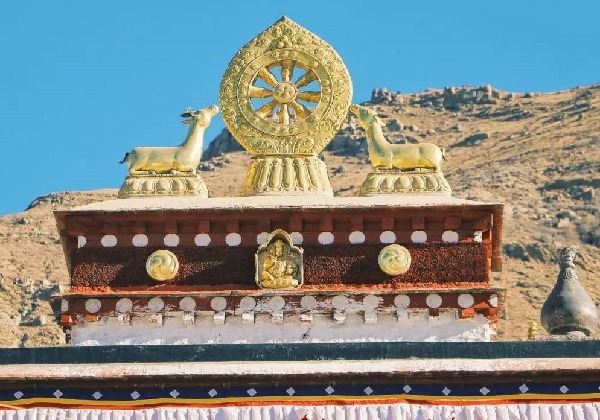
Sera Monastery is a complex of structures, covering an area of about 110,000 square meters, and in its most prosperous period, there were more than 8,000 monks in the monastery. It is also one of the six main monasteries of the Gelug sect of Tibetan Buddhism. Gelugpa master Tsongkhapa once resided here and lectured in the monastery.
The founder of the monastery, Shakya Yeshe (1355–1435), was the head disciple of Master Tsongkhapa. He built the original Sera Monastery in 1,419. Before establishing this monastery, Tsongkhapa, assisted by his disciples, had set up hermitages at higher elevations above Sera Utsé Hermitage.
Shakya Yeshe was also the first Tibetan Lama to preach the Dharma to the emperor of the Ming Dynasty. After Shakya Yeshe returned to Tibet, he worshipped the scriptures and Buddha statues bestowed by the Ming emperor in the temple. You can still see them today.
Sera Monastery enshrines tens of thousands of gold and bronze Buddha statues cast in different periods in Tibet and from India and the Central Plains. It collects a large number of scriptures, instruments, exquisite thangkas, embroidery, murals, and other precious art treasures. This is a good place to worship Buddha and to enjoy art and crafts.
The Architecture of Sera Monastery
The architecture of Sera Monastery is in the Tibetan style, and the halls are resplendent and magnificent. A kora around the monastery is only 1.5 kilometers. The layout of Sera Monastery is centered on the Tsochin Hall, surrounded by numerous buildings affiliated with the major colleges of the monastery. Different from the buildings of Chinese Buddhism, the layout of Sera Monastery is not axially symmetrical but scattered among the mountains.
The Tsochin Hall and the Dharma Protectors Hall are the most famous ones. You must not miss them.
Tsochin Hall
The main hall of Tsochin is the center of the whole complex, with an area of 1,092 square meters, supported by 108 large pillars. It is also the most majestic building, which can accommodate 5,000 monks chanting sutras at the same time, with a total of four floors.
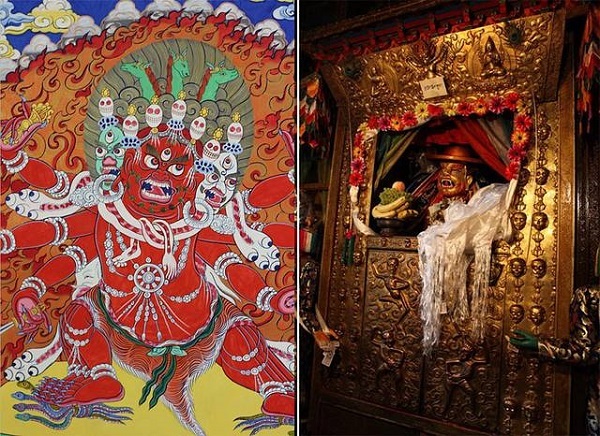
There are a large number of colorful murals painted on the walls of the temples. The main hall is dedicated to a two-story-high Shakyamuni statue and a statue of Shakya Yeshe, with a unique hat written in Sanskrit on his head. The hat was given by Emperor Yongle of the Ming Dynasty when he was teaching Buddhist scriptures in the Central Plains. And there's a colorful silk portrait of Shakya Yeshe, 109 cm long and 64 cm wide. Although it is more than 500 years old, the color is still very bright. The collection of about 200 Tibetan Buddhist canons like "Kangyur" and "Tengyur" in the Tsochin Hall is all transcribed with gold juice, which is very precious.
Dharma Protectors Hall
The most famous statue, the Hayagriva Statue, is in the Dharma Protector Hall on the fourth floor of Je Dratsangs. Go straight into the main hall and pass a row of small halls. You will see the statue at the end. Hayagriva is a guardian deity of the Tantric Buddhism of Tibetan Buddhism. It's said that this 600-year-old Hayagriva Statue is the patron saint of many young people and children. He has powerful mana and can exorcise evil spirits. Locals would stick their heads into a small shrine and touch the base of the statue with their heads.
It was created in the mid-15th century by the eminent Tibetan Buddhist monk Rinchen Senge, whose family has practiced Hayagriva Vajra Tantra for generations. Later, the master became Tsongkhapa's disciple, so he also had extremely high achievements in sutra and esoteric practice.
The devotees who come to Sera Monastery will mainly worship this hall. Visitors can join them, praying for blessings and warding off evil spirits. There's a Sera Bengqin Festival of worshipping the Hayagrivas Dorje Pestle held on Dec. 27 of the Tibetan calendar every year. It's a religious festival unique to Sera Monastery.
Sera Debate
Sera Debate is very famous. The debate courtyard is on the north side, where eminent monks and living Buddhas used to preach Buddhist scriptures. The debate usually starts at three in the afternoon, and it is normally held from Monday to Saturday.
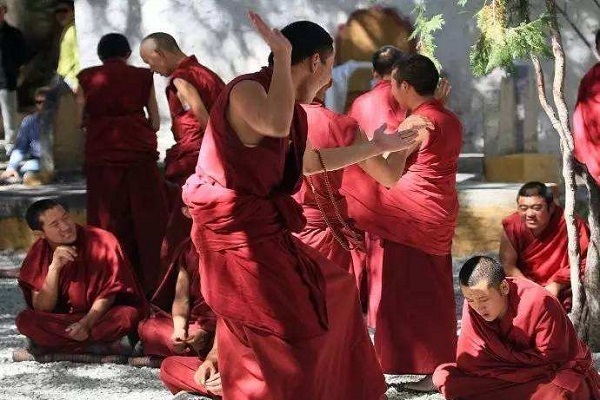
The monks from all colleges spend some time in the afternoon debating with each other the content they have learned in the morning. Debating is an important way for monks to improve their practice, as well as study and research the Buddhist scriptures.
As one of the top three monasteries of the Gelug sect of Tibetan Buddhism in Lhasa, Sera Debate has a history of more than 600 years. Even if you have seen some lively debates in other monasteries, you must not miss the big scene in Sera Monastery.
In the debate, the monks formed different groups in twos and threes. Typically, the questioner is standing and the respondent is seated. Learning Buddhism by debating scriptures is a traditional feature of Tibetan Buddhism. Through this question-and-answer way, the monks exchange their views and experiences of studying the Buddhist scriptures and deepen their understanding.
Three Colleges
There are Sera Me Dratsang, Ngakpa Dratsang, and Je Dratsang. Dratsang is the Transliteration of the Tibetan word - educational monastery. It is a college for monks to study the Tibetan Buddhist discipline.
Sera Me Dratsang is the oldest college built here. It was established in 1419 during the Ming Dynasty and originally taught primary knowledge.
Sera Ngakpa Dratsang is the smallest one. The college is dedicated to Tantric studies.
Sera Je Dratsang teaches itinerant monks from outside of Tibet and is the largest of the three functioning educational institutes at the monastery.
Climb up Utsé Mountain
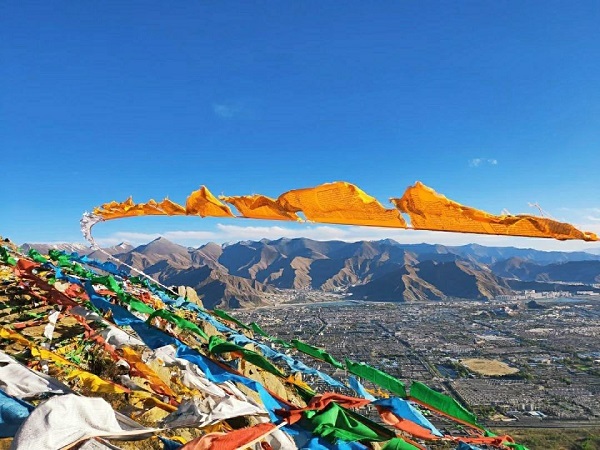
Climbing up to the top of the background Utsé Mountain, you can enjoy a panoramic view of Lhasa City. This is a popular place for mountain climbers. The relative height of the mountain is about 500 meters. Climbing up the mountain takes about 4 hours and is physically demanding. Yet, you can find that the view of Lhasa City is getting wider as you go up along the mountain path.
Travel Tips:
- Every year on Dec. 27th in the Tibetan calendar, the monastery will host the Sera Bengqin Festival. On the festival day, there's a blessed vajra for believers to bless and exorcise evil spirits. And many devotees will participate in the ritual, and tourists can also come here to pray to exorcise evil spirits.
- To follow the tradition of Tibetan Buddhism, walking around the temple and hall, and turning around the prayer wheel should be in a clockwise direction.
- To respect the beliefs of the local people, do not point your fingers at the Buddha statues; take off your hat and keep quiet after entering the halls; do not take photos without permission.
- It is recommended to arrange the hall visit before noon because many halls will be closed after three o'clock in the afternoon, which time is specially arranged for visiting the debate in the courtyard.
- Try to keep as quiet as possible when watching the debate. Don't disturb the monks, like getting too close or taking pictures all the time.
- Sera Monastery is located at a high elevation. Visitors who are new to Lhasa should avoid strenuous exercises like climbing the mountain. If you feel a bit exhausted, you don't have to keep climbing.
Here's a video about Sera Monastery for watching more details.
Lhasa
Enjoy the most spectacular attractions in Lhasa and select experiences of local Tibetan life with your loved ones.
Lhasa - Gyantse - Shigatse - EBC - Shigatse - Lhasa
Escorted by our experienced guide, you can view Tibetan monasteries and the highest peak in the world with a wheelchair.
Chongqing - Lhasa - EBC - Lhasa
Bend Wulong's stunning karst landscapes with Tibet's rich cultural heritage and the grandeur of the Himalayas
Email response within 0.5~24 hours.


